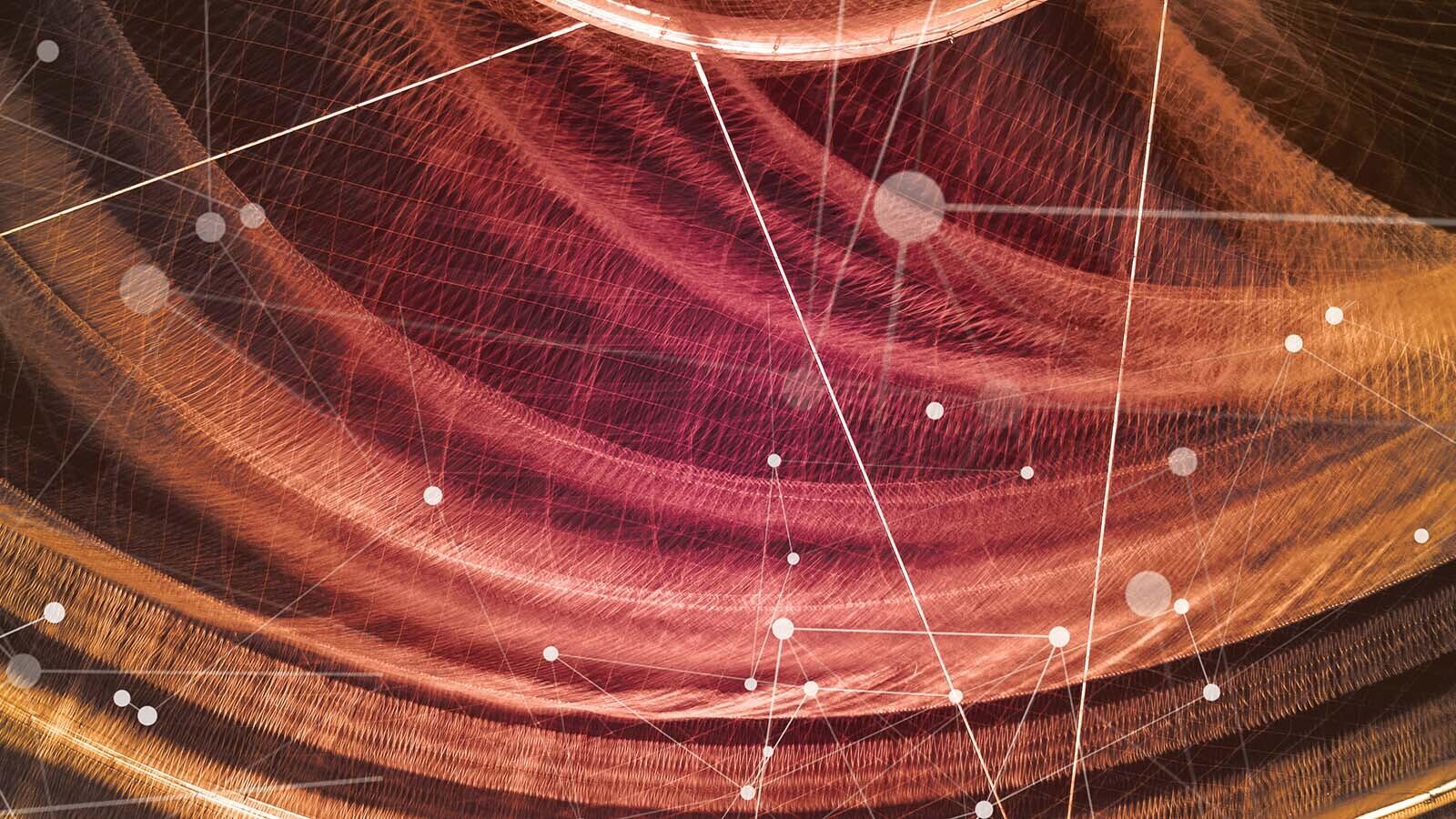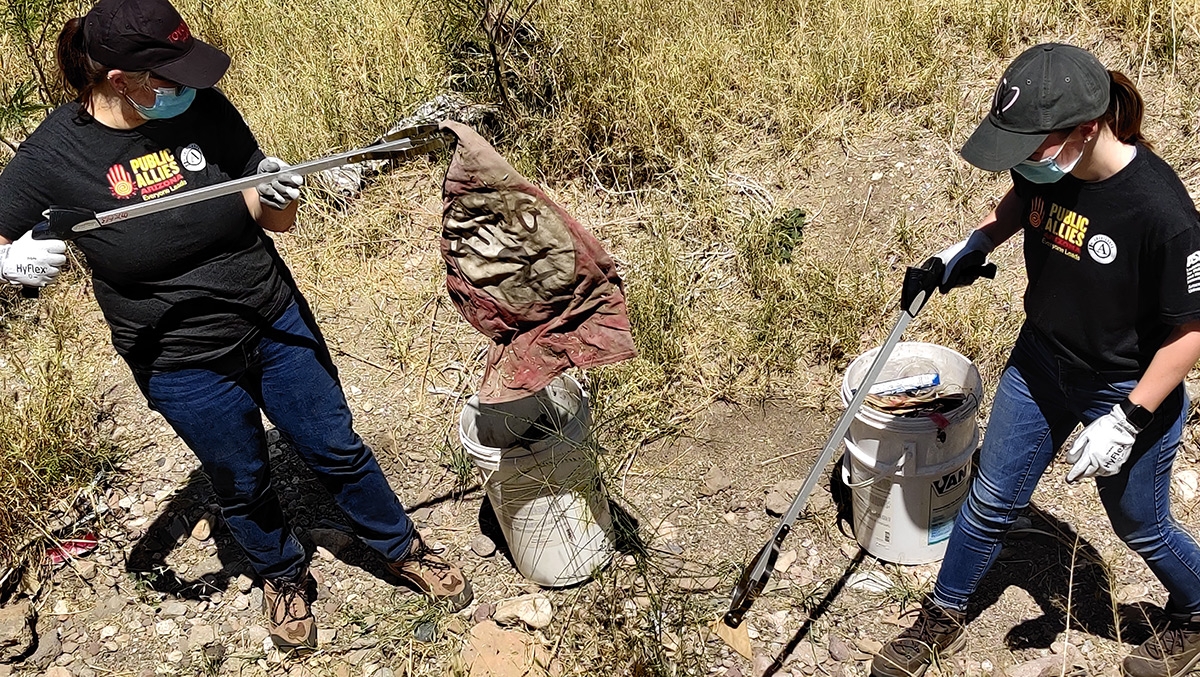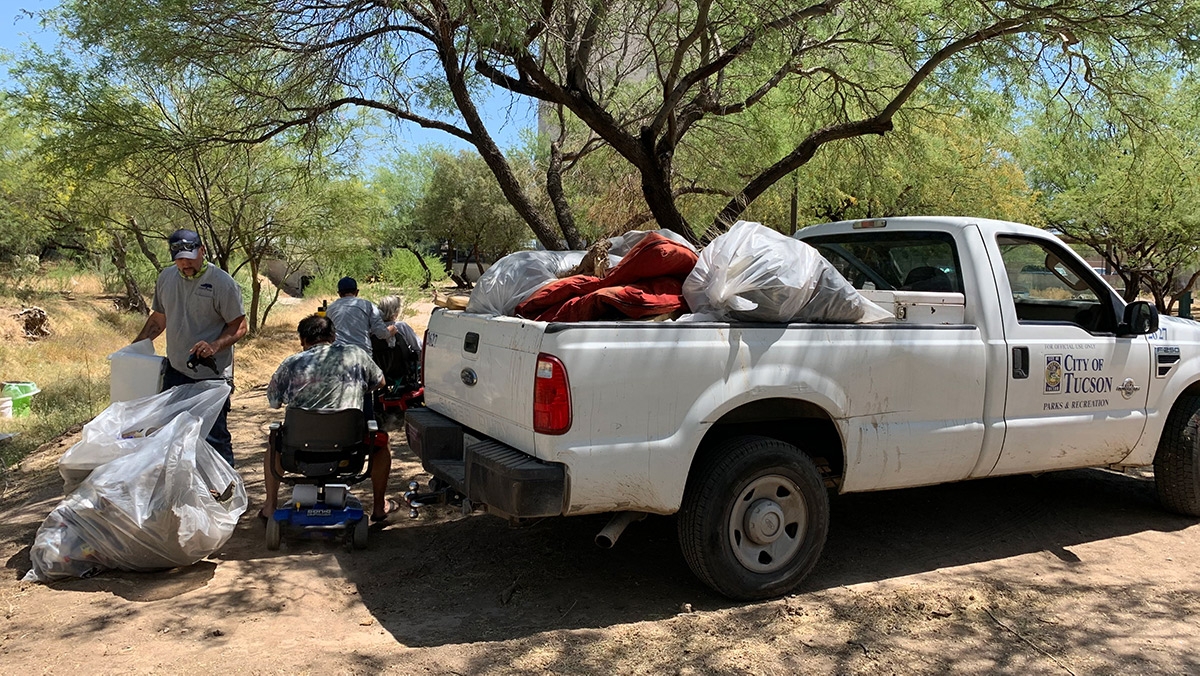
Newsroom

How a team of Public Allies cleaned up a Tucson park and learned to lead

Public Allies Ariel Baber (left) and Brianna Johnson clean up some of the debris in the wash at Francisco Elias Esquer Park during their service project. A team of volunteers needed the entirety of the cleanup event just to clear the wash.
For their team service project, a group of Allies transformed a public park
by Troy Hill, ASU Lodestar Center for Philanthropy and Nonprofit Innovation
July 14, 2021
Last October, three young Public Allies who barely knew each other were pulled together into a group. Their task was to implement a service project that would impact the community. In the end, these Allies were able to work together and clean up Francisco Elias Esquer Park in Tucson, Arizona. They also managed to create a friendship that, like their work in the park, is expected to last for years to come.
In April 2021, Ariel Baber, Brianna Johnson and Marissa Figueroa led a park cleanup and revitalization effort that completely changed the face of Francisco Elias Esquer Park. They picked up the trash that littered the park, repainted many of its structures, and even cleared out a desert wash that looked more like a landfill.
The three met for the first time when they joined the Public Allies Arizona program and were grouped together for the service project that each Ally must complete.
The idea they started with was trash pickup. Figueroa said they knew it was the park they should focus on the first time she saw it. The wash was filled with trash, and Figueroa remembers saying, “There’s a mattress in here.”
After they had the groundwork laid out for the cleanup, they added other ideas to also serve the park, mainly utilizing resources from volunteers. For example, Tucson Parks and Recreation suggested they paint some of the structures at the park, such as light poles and pagodas. With the help of the city they were able to repaint quite a few. Figueroa was particularly impressed with the repainted concrete turtle, which was painted to look like a Teenage Mutant Ninja Turtle.
They also installed brochure holders, which contain information for people experiencing homelessness about nearby resources and help.
The group recruited around 20 volunteers for the event, many from Pima Community College and some from other local nonprofits and communities, such as Bario Blue Moon.
“Breanna was so great with establishing relationships with University of Arizona and Pima Community College,” Baber said. “And she would give these presentations during their honors meetings, and from that, I think we got quite a few volunteers.”

Volunteers pile the bags of trash into the back of a volunteer’s truck.
They were also happy that community members who happened to be passing by jumped in to help.
Figueroa said one of the most impactful moments was when community members started to ask how they could get connected and do the same thing. To her, it showed how the project could have longer lasting improvements and impacts in the community.
“We had spent the time, we have found the resources, which once we found the right person to talk to, we were literally handed all the resources we needed to help improve this park - and now that we could connect those resources to the people who wanted to use them and could continue it," Figueroa said. "I think that was one of those moments, like, okay, the sustainability of this moving forward has a chance to go somewhere.”
They also all said that seeing the trucks drive away at the end of the day with over 20 full bags of trash was very impactful and satisfying for them.
Johnson said the amount of people there intimidated her at first, but it helped her to realize how far she and her group had come since starting the Public Allies program.
“I was like, ‘Oh man, this little tiny project that just started with this little mini idea, [now] we have all these people here.’ And then by the end of the day, it was like, ‘Wow, we did that. We did that thing. And we did it together.’ Would any of us have probably seen ourselves doing this project like a year ago or meeting one another? Probably not.”
Baber followed up a little later, “It definitely put that emphasis on the Public Allies leadership program. We learned to lead together.”